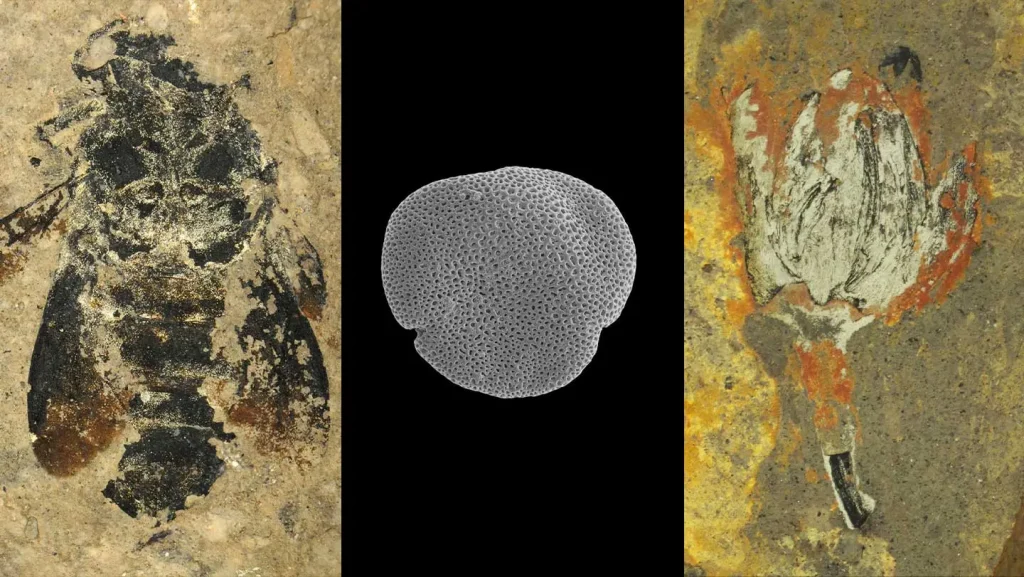Ancient Bees and Flowers Reveal 24-Million-Year Pollination Partnership
In a remarkable discovery that provides a window into the ancient natural world, scientists have uncovered the oldest direct evidence of a specific pollination relationship between two species. Examining 127 exceptionally well-preserved fossils from central Germany, researchers identified pollen particles that establish a definitive connection between ancient flowers and their buzzing pollinators from approximately 24 million years ago. This finding, published in the journal New Phytologist on September 22, offers unprecedented insight into the longstanding relationship between plants and their insect partners.
The fossils were recovered from what was once a crater lake near Enspel, Germany, situated between Düsseldorf and Frankfurt. According to Christian Geier, a paleobotanist at the University of Vienna who led the study, this ancient lake created perfect conditions for preservation. “Insects fall into water bodies and drown all the time,” Geier explains. “In the case of the fossilized bumblebees, they escaped being eaten by fish and ended up sinking down to the bottom of the lake.” There, covered by sediments, both bees and flowers were exquisitely preserved, including microscopic pollen grains that would become the key to understanding their relationship.
Through careful examination, the research team identified a previously unknown species of linden tree flower, which they named Tilia magnasepala, as well as two new species of bumblebee: Bombus messegus and Bombus palaeocrater. These bumblebees represent the oldest known fossils of their kind in Europe. What makes this discovery truly groundbreaking is the presence of matching pollen both inside the flowers and on multiple parts of the bees’ bodies – including their legs, mouthparts, and abdomens. This distribution pattern clearly indicates that the bees actively collected pollen as they visited the cup-shaped linden flowers.
The significance of this finding extends beyond merely identifying ancient species. As Constanza Peña-Kairath, a specialist in ancient insect pollination who wasn’t involved in the research, points out, “The mere presence of pollen adhered to the body of a fossil bee only confirms the insect made floral visits.” What makes this discovery exceptional is that it establishes an “unambiguous relationship between pollinator and the pollinated” through the precise matching of pollen types. By using scanning electron microscopy, the researchers were able to examine the detailed structure of pollen grains from both the flowers and bees, confirming they were identical.
Perhaps most fascinating is the continuity revealed by this ancient partnership. According to Friðgeir Grímsson, another paleobotanist at the University of Vienna involved in the study, this discovery represents “direct proof for a bee-flower interaction that is still ongoing in Europe.” Modern linden trees continue to rely on bumblebees for pollination, demonstrating a remarkably stable ecological relationship spanning 24 million years – the longest documented continuous plant-pollinator interaction.
This research also contributes to our understanding of plant evolution more broadly. While evidence of insects carrying pollen of non-flowering plants dates back at least 280 million years, flowering plants experienced an evolutionary explosion around 130 million years ago. Today, flowering plants comprise approximately 90 percent of all plant species, a success that scientists believe is largely attributable to their relationships with pollinators. This newly discovered ancient bee-flower partnership helps illuminate how these crucial ecological relationships have shaped the natural world we see today, persisting through epochs of climate change and geological transformation to continue their ancient dance of mutual benefit.


